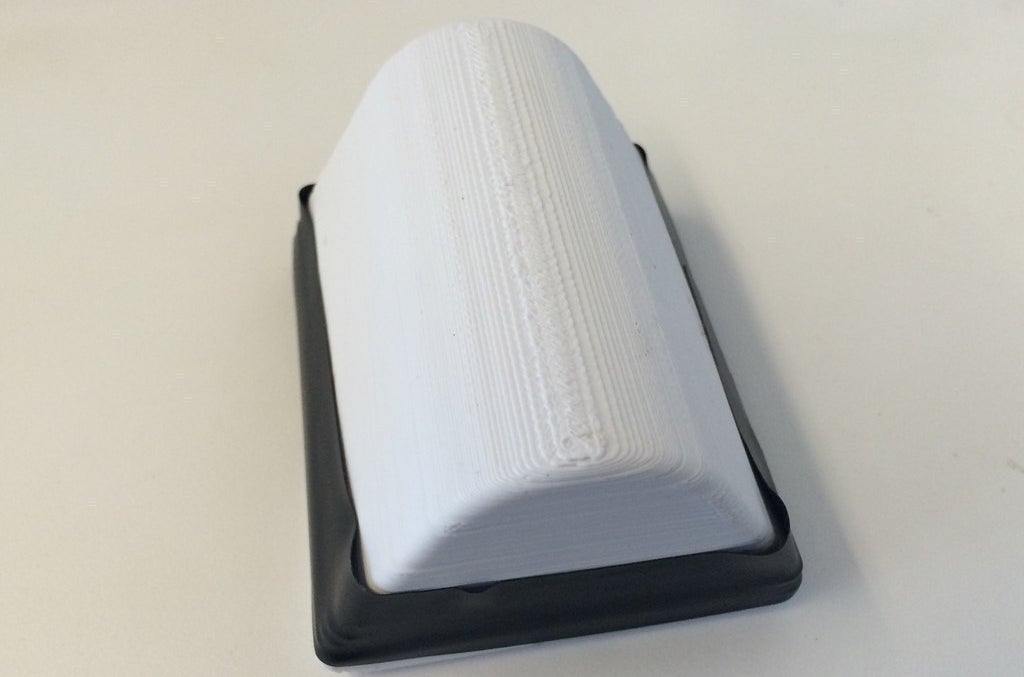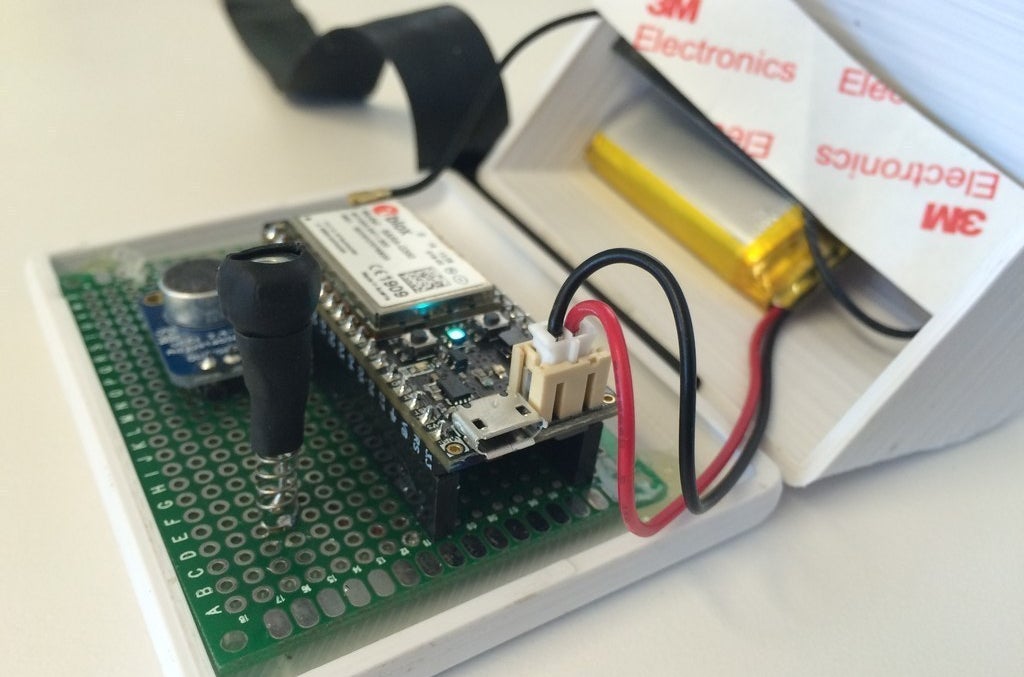I was in a Lyft the other week, and my driver shared with me his deep annoyance at the number of potholes in the city. He told me no one notices them more than those who drive for a living. Potholes are more than just annoying, they threaten to break his car, which he relies on for both personal and professional reasons.
In Panama City, an ad agency built a bunch of little pucks that tweet at city officials whenever someone runs over a particularly egregious pothole. That project got the Open Lab fellows thinking, so we rigged this up:


We used a little microphone and a Particle Electron, a cellular connected microcontroller, to build our tweeting pothole gadget. We rigged a vibration sensor out of a small spring and a paperclip, so the microphone can sleep between jostlings. Ogilvy's pucks looked like they'd fly around, so we designed our container with a round edge that can press into the corner of a pothole, and a flat side, to leave a bit of a ramp. Cars will definitely hit it, but not with enough force to break it.
The pothole sensor doesn't record cars based on compression. It uses the vibration and sound of the car running over the pothole to determine that the pothole has been hit. Running over the device triggers a vibration sensor, waking the microphone. If the thing that caused the vibration is loud enough, a microphone picks up the sound and tells our cellular board to publish an event to the Particle cloud. Services and bots can subscribe to that event and listen for changes. Which means that one of Westley Hennigh-Palermo's Twitter bots could use the data in realtime to tweet @sfgov with the location of the pothole and a reminder that it is still unfilled.
We needed a breadboard to connect all the pieces, a microcontroller to manage all these interactions, an internet connection to communicate with the outside world. Particle makes an cellular connected microcontroller, the Electron ($59) that bundles what we needed with a cell plan and access to Particle's cloud network. We added a microphone and a vibration sensor that we rigged from a paperclip and the spring of a ball point pen, and printed our own casing on our LulzBot.
When we've got it working, we'll post more precise instructions. Until then, follow the pothole sensor's progress on the Open Lab blog and our Github repository.
And, if you know a SF pothole we should deploy it in, let us know where to find it!

